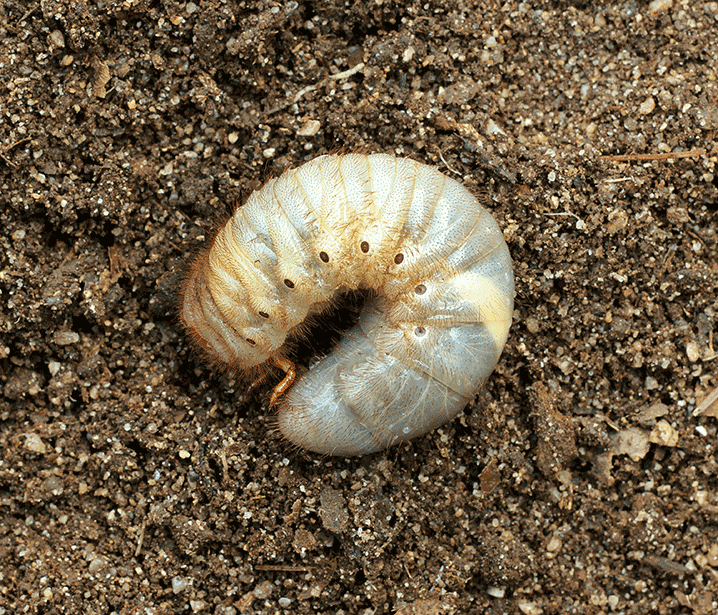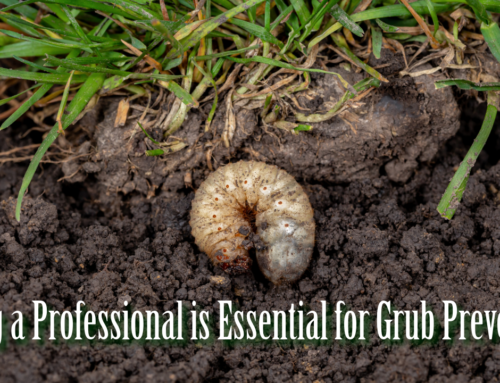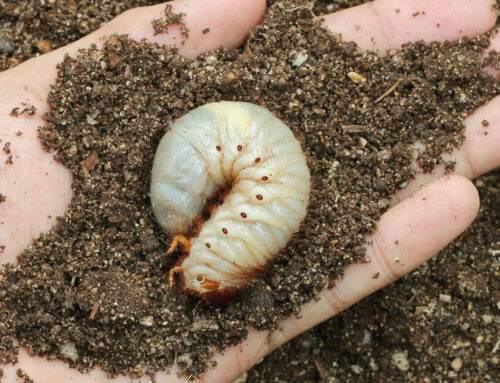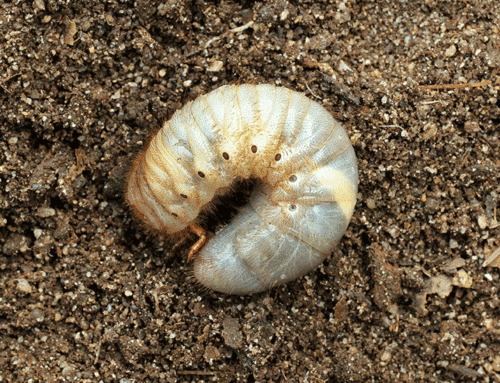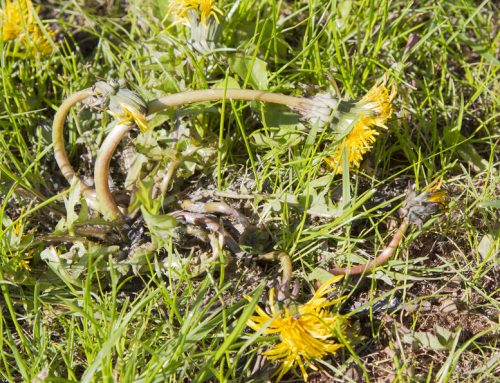Put a Stop to Pests That Destroy Your Curb Appeal
If your lawn has scattered patches of dry and brown grass, it’s very likely you have lawn grubs. There’s a simple test to help you be sure if this is the case. Try to lift a patch of grass. If it peels away from the soil like a piece of carpet with no roots holding it, then you probably have grubs. Now for the good news—there are ways to prevent them AND put a stop to them if they’ve already attacked your lawn.
What are grubs?
Grubs are whitish, c-shaped larva of a beetle no longer than half an inch. Beetles lay their eggs in mid-summer, possibly right now, in sunny areas of your lawn.
Why are grubs such a nuisance?
Grubs eat the roots of your grass, and you’re left with those ugly dry, brown spots. But it’s not just an aesthetic problem. In addition to making your lawn a mess, grubs also attract wildlife like raccoons and rodents who eat them. These rodents will rip away your grass as they dig tunnels, trying to find more grubs to eat.
Preventing grubs
Fall is the season to prevent grubs. Here’s why—early spring is the time when grubs awaken from hibernation and work their way deep into your soil, below the grass surface. In late spring, they’re in the pulpae stage when they’re about to turn into beetles that will feed on your shrubs and trees. They’re larger at this time, so it’s harder to treat the problem.
Here’s what you can do—grow your lawn grass longer than usual. This may be hard, especially if your neighbors’ lawns look trim and perfect, but the key is to prevent them from being hatched, before they’re already a problem. And beetles don’t like to lay eggs in long grass. So keep your lawn at least two inches long.
Overseed and fertilize your lawn in the fall and spring. When your grass is very thick, it won’t be attractive to beetles. And that’s the goal. If possible, add a layer of dead leaves on top of your lawn before winter. This will further discourage beetles from making a home in your grass.
Don’t water your lawn as much as you normally do. While this may seem strange, keep in mind that grub eggs need moisture to hatch. If conditions aren’t favorable, that’s a good thing. Of course grass needs water, so give your lawn a lot of water once in a while instead of a little bit every few days.
Treating your lawn for grubs
If the problem has persisted for a long time and prevention measures aren’t enough, you’ll have to treat the infestation. But first—consult with professionals to make sure that you do, in fact, have a grub problem. If you misdiagnose the issue or try to treat it yourself and don’t treat the entire lawn, you could wind up with an even bigger problem.
Common products that will poison grubs contain the chemicals imidacloprid or halofenozide. If you don’t want to use chemicals and prefer a greener, more environmentally-friendly solution, you can use botanical pesticides such as Neem Oil, which repels lawn grubs and Japanese Beetles. Mix it with water, then spray the affected areas of your lawn.
The Veron Team are landscaping professionals who work with you to ensure you have the best looking home in the neighborhood! Residential or commercial—from fertilization services to snow removal—we do it all. Contact us today and let us go to work for you!
The Veron Company, serving Marlborough, Massachusetts and surrounding areas, including Cape Cod since 1982.

